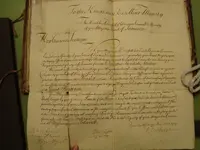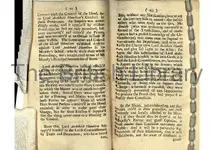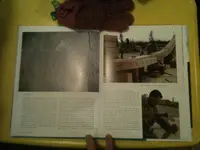I've been around the world to a ton of archives. The best way at a library, historical society, archive, etc. is to bring a good camera with a high resolution setting (most iPhones do the job). Turn off any sounds & turn off the flash.
Archives actually provide weights for this very purpose so you can lay open the pages without damaging the spine. Or you can use other books or devices to try to keep a book open. I keep coins in a garden glove that has rubber dots on it. Works perfectly in giving me a "hand" while I take digital photos of an open book. Just lay it open, weight the edges & snap away.
A lot of PDF software these days has the ability to turn photos into PDF pages with searchable text (OCR technology). So you can import every page into a single document & have forever access to it.
I'm a paperless researcher, & I've obtained THOUSANDS of primary-source documents this way.
And it's all free.
And legal.
And green.
This is a handwritten 1717 book I copied at Jamaica's archives before a hurricane drove me out of there. The snake-like thing on the right is a string of weights made for the purpose:

This 1717 book pic uses a snake weight & sand bags at the British Museum, the one place where they do NOT allow you to bring in your own camera. They have a photo machine that watermarks everything, & yes you must pay a fee. Worth every penny imo.

But down the road at the Kew National Archives outside London you can snap away with your own camera. In fact, 95% of the archives I've used allow you to do this with your own camera free of charge. I don't know about Seville. Haven't yet been there. It's on my bucket list.
 (Good idea though)
(Good idea though) (Good idea though)
(Good idea though)


 So I hope I won't get a Late night Visit from the Library cop[h=1]Joe Bookman[/h]
So I hope I won't get a Late night Visit from the Library cop[h=1]Joe Bookman[/h]


